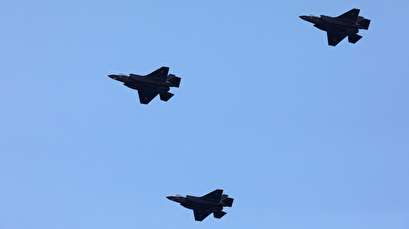The document, published on Tuesday, calls joint air power (JAP) a “key instrument in achieving NATO’s three core tasks and other political objectives.” It is the first such document since the NATO naval strategy was formulated in 2011.
“For almost 70 years, airpower has been a core part of NATO’s military capabilities. From deterring the Soviet Union during the Cold War, to operations in the Balkans in the 1990s and the fight against international terrorism in the deserts of Afghanistan, air power has helped to protect our people and achieve our political objectives,” NATO spokesperson Oana Lungescu said in a statement.
The new strategy will “help ensure that allied air forces remain world class, flexible and ready for any possible contingencies,” Lungescu added.
The eleven-page document consists mostly of broad generalizations and is written in dry political and military language. Some of the contents, however, provide clues as to what NATO’s air priorities will be, going forward.
One of the first contingencies brought up in the strategy is the stark warning that “for the first time since the end of the Cold War, the Alliance has to be able to conduct operations against any peer-state actor.” As a result, the “future operating environment may be one in which air superiority can neither be assured at the onset of operations nor, once obtained, be an enduring condition.”
This is a marked contrast to the environment NATO has become accustomed to: Since 1991, the alliance has mostly fought targets with, at best, limited ability to fight back, from Bosnia in 1995 and Serbia in 1999, to Libya in 2011 and the ongoing operations in Afghanistan.
Though the document does not specifically name any adversaries, it is clear the “peer-state actor” phrasing is referring to Russia. NATO has been massing troops and equipment on the Russian border, especially in the Baltic states and Poland, since the crisis in Ukraine began in 2014. Parallel to the troop buildup, NATO officials have raised alarm about Russian air defenses’ capabilities for “Anti Access/Area Denial” (A2/AD, in military parlance). Meanwhile, NATO flyers have had a number of run-ins with their Russian colleagues in international airspace.
The ability to use air power for intelligence-gathering, threats of force, critical delivery of supplies and rapid attack is critical to NATO’s operation, the strategy says. To ensure its success, the alliance needs to invest in new technology, better training facilities, more and better bases, and “a robust and securely networked environment” secured from cyber interference.
 TEHRAN,
TEHRAN,